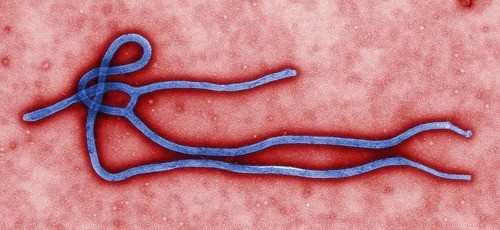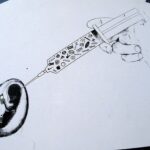Human Ebola Virus Species and Compositions and Methods Thereof
US 20120251502 A1
Abstract
Compositions and methods including and related to the Ebola Bundibugyo virus (EboBun) are provided. Compositions are provided that are operable as immunogens to elicit and immune response or protection from EboBun challenge in a subject such as a primate. Inventive methods are directed to detection and treatment of EboBun infection.
DEPOSIT STATEMENT
The invention provides the isolated human Ebola (hEbola) viruses denoted as Bundibugyo (EboBun) deposited with the Centers for Disease Control and Prevention (“CDC”; Atlanta, Ga., United States of America) on Nov. 26, 2007 and accorded an accession number 200706291. This deposit was not made to an International Depository Authority (IDA) as established under the Budapest Treaty on the International Recognition of the Deposit of Microorganisms for the Purposes of Patent Procedure, and is a non-Budapest treaty deposit. The deposited organism is not acceptable by American Type Culture Collection (ATCC), Manassas, Va., an International Depository Authority (IDA) as established under the Budapest Treaty on the International Recognition of the Deposit of Microorganisms for the Purposes of Patent Procedure. Samples of the stated Deposit Accession No. 200706291 will be made available to approved facilities for thirty years from the date of deposit, and for the lifetime of the patent issuing from, or claiming priority to this application.
FIELD OF THE INVENTION
The invention is related to compositions and methods directed to a novel species of human Ebola (hEbola) virus.
BACKGROUND OF THE INVENTION
The family Filoviridae consists of two genera, Marburgvirus and Ebolavirus, which have likely evolved from a common ancestor1. The genus Ebolavirus includes four species: Zaire, Sudan, Reston and Côte d’Ivoire (Ivory Coast) ebolaviruses, which have, with the exception of Reston and Côte d’Ivoire ebolaviruses, been associated with large hemorrhagic fever (HF) outbreaks in Africa with high case fatality (53-90%)2.
Viruses of each species have genomes that are at least 30-40% divergent from one another, a level of diversity that presumably reflects differences in the ecological niche they occupy and in their evolutionary history. Identification of the natural reservoir of ebolaviruses remains somewhat elusive, although recent PCR and antibody data suggest that three species of arboreal fruit bats may be carriers of Zaire ebolavirus3. No data has yet been published to suggest reservoirs for the Sudan, Reston and Côte d’Ivoire ebolavirus species. However, a cave-dwelling fruit bat has been recently implicated as a natural host for marburgvirus4, 5, supporting the hypothesis that different bat species may be the reservoir hosts for the various filoviruses.
Filovirus outbreaks are sporadic, sometimes interspersed by years or even decades of no apparent disease activity. The last new species of ebolavirus was discovered 14 years ago (1994), in Cote d’Ivoire (Ivory Coast), and involved a single non-fatal case, a veterinarian who performed an autopsy on an infected chimpanzee found in the Tai Forest6. No further disease reports have been associated with Côte d’Ivoire ebolavirus, in contrast to Zaire and Sudan ebolaviruses which have each caused multiple large outbreaks over the same time period.
In late November 2007, HF cases were reported in the townships of Bundibugyo and Kikyo in Bundibugyo District, Western Uganda. The outbreak continued through January 2008, and resulted in approximately 149 cases and 37 deaths2. Laboratory investigation of the initial 29 suspect-case blood specimens by classic methods (antigen capture, IgM and IgG ELISA) and a recently developed random-primed pyrosequencing approach identified this to be an Ebola HF outbreak associated with a new discovered ebolavirus species. These specimens were negative when initially tested with highly sensitive real-time RT-PCR assays specific for all known Zaire and Sudan ebolaviruses and Marburg viruses. This new species is referred to herein as “the Bundibugyo species”, abbreviated “EboBun”.
Accordingly, compositions and methods directed to the new Ebola virus species are described herein and the most closely related Ebola Ivory Coast species, which compositions and methods are useful for diagnosis and prevention of human Ebola virus infection; including related vaccine development, and prevention of hemorrhagic fever in a human population.
http://www.google.com/patents/US20120251502
via Het Ebola Virus : Patentnummer US20120251502.








